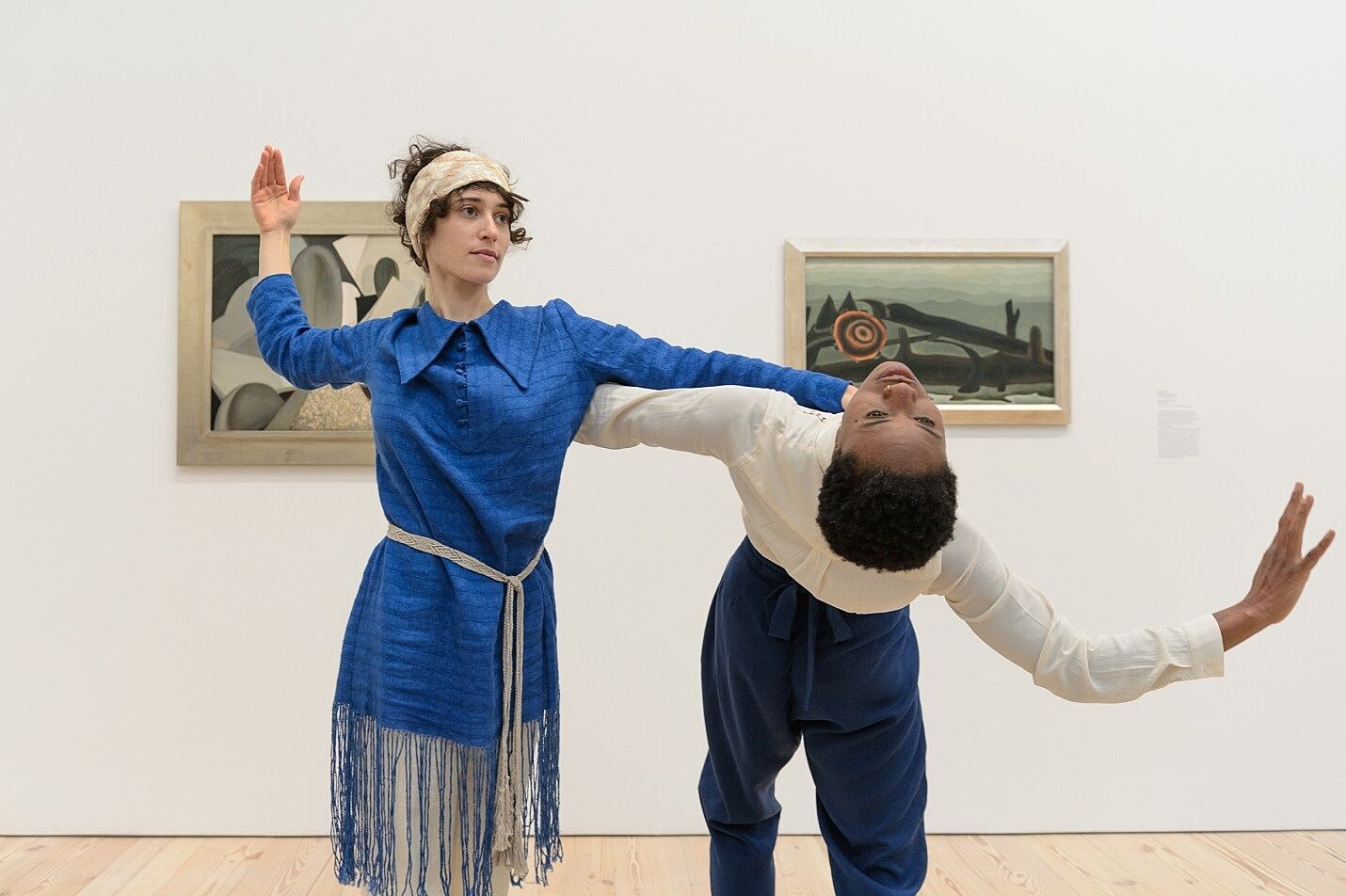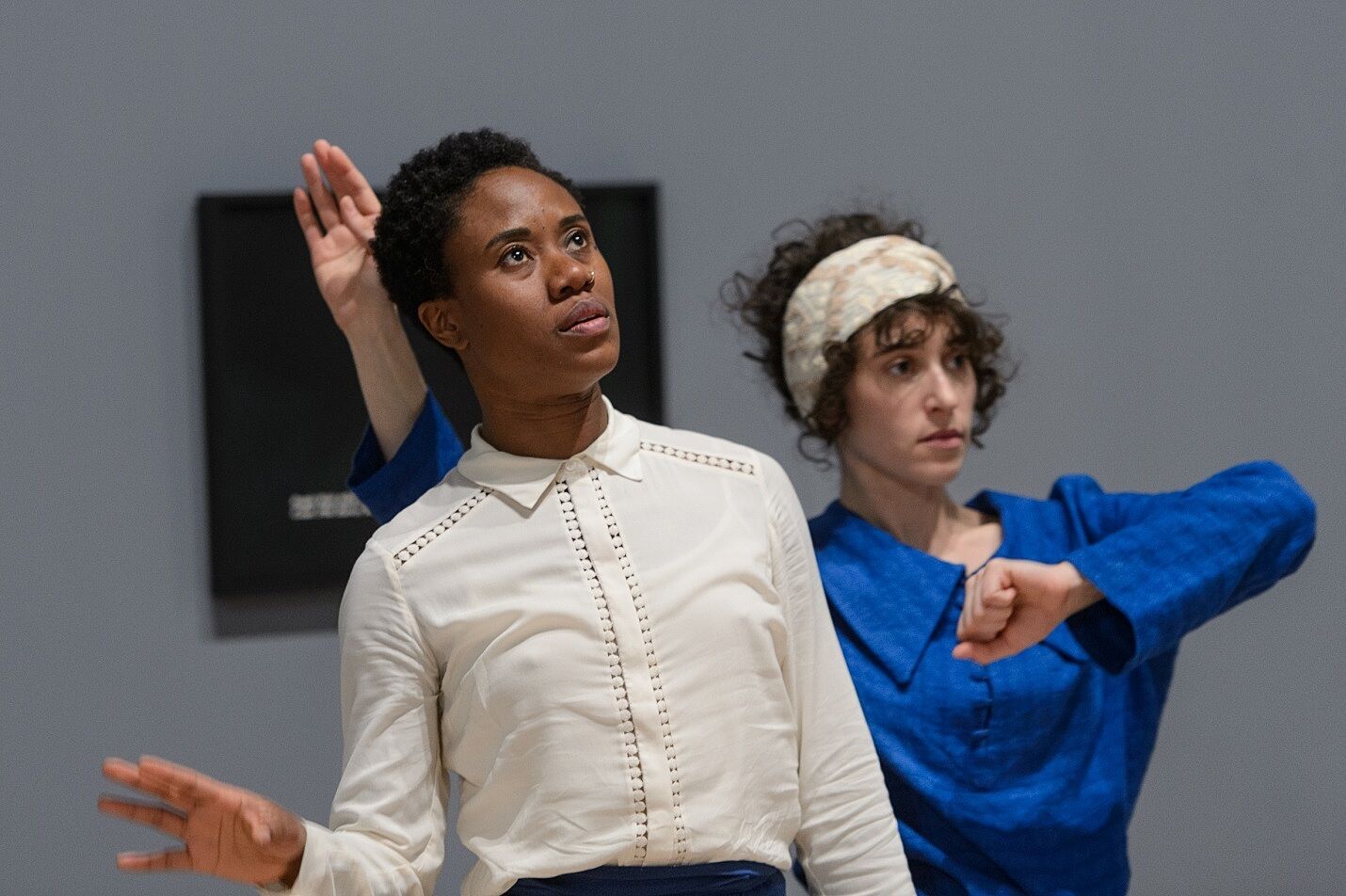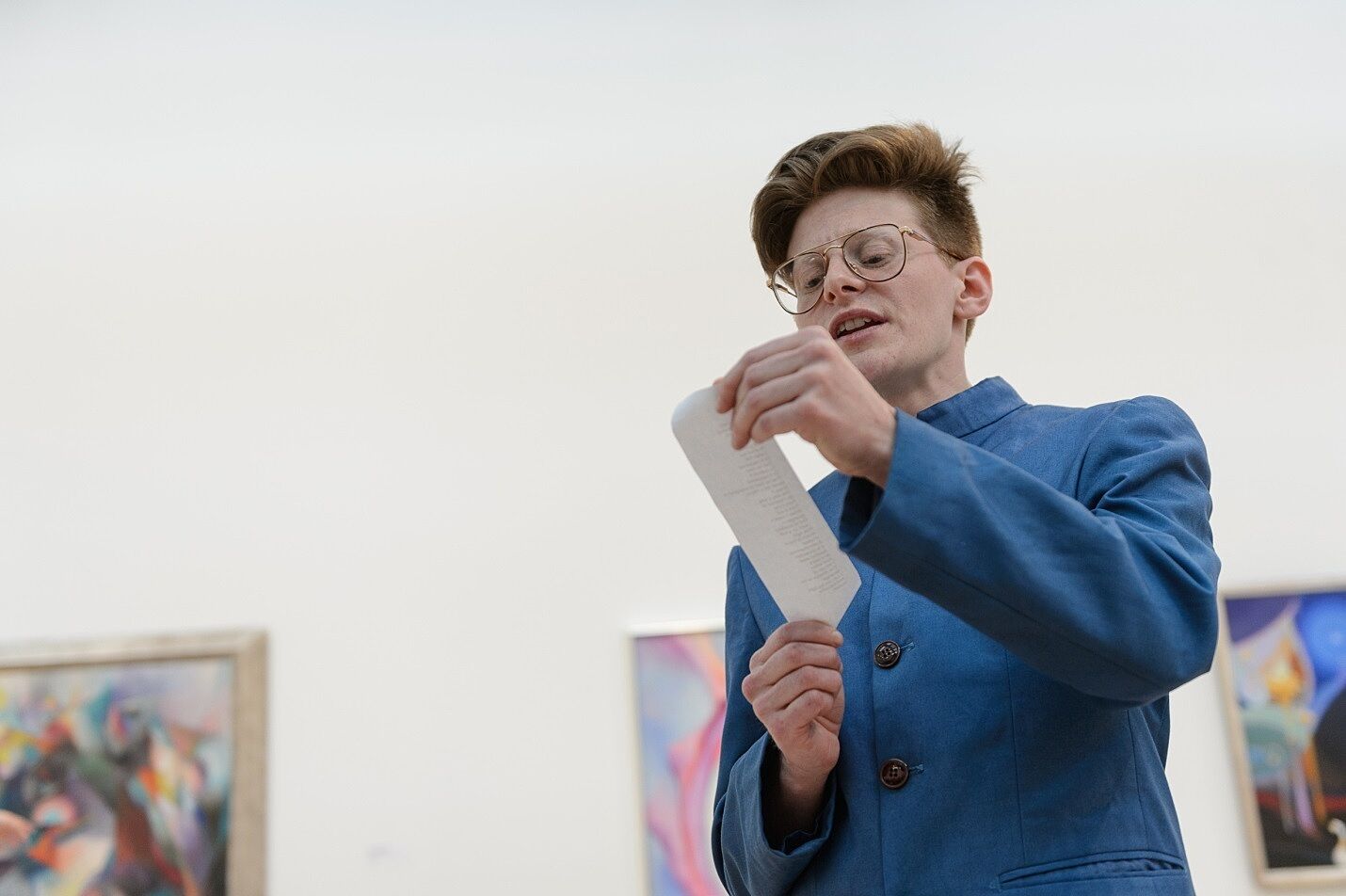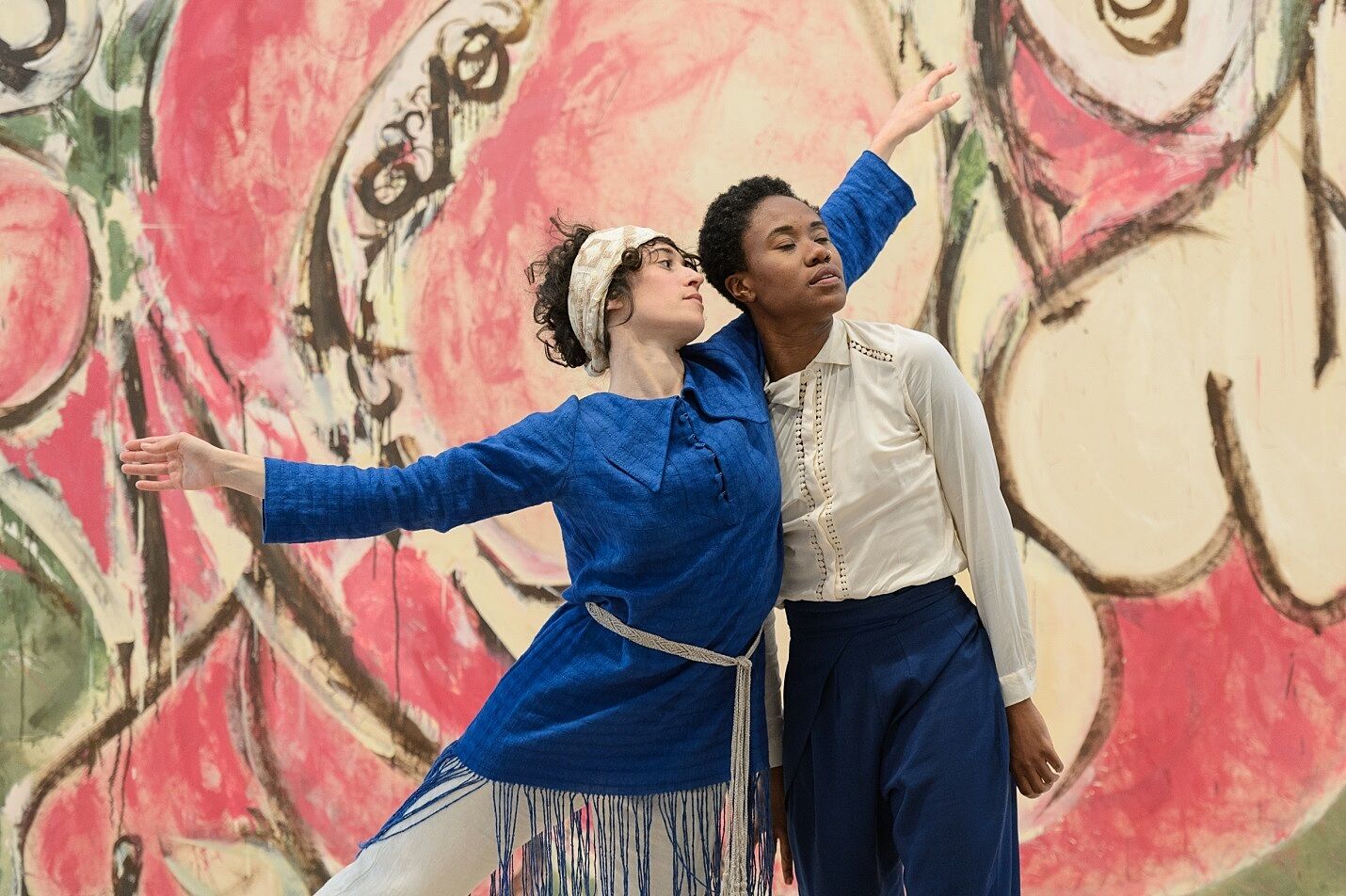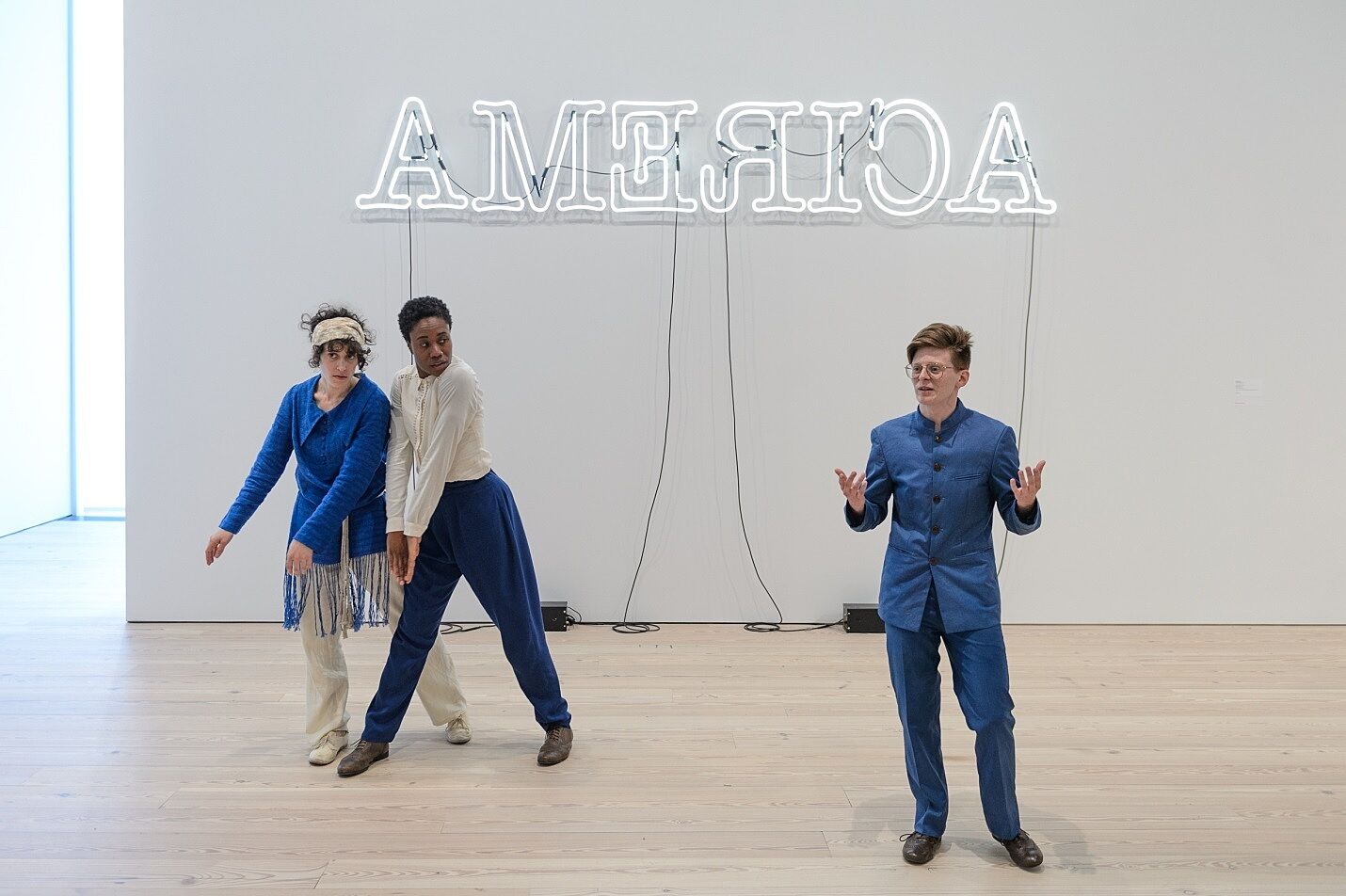Andrea Geyer: Time Tenderness
Jul 20, 2015
Over the course of the past year, artist Andrea Geyer conducted in-depth research on the history of the Whitney Studio Club and the Whitney Museum, focusing on the work and lives of its founder Gertrude Vanderbilt Whitney and Juliana Force, the Museum’s first director. From her research, Geyer mapped ideas inspired by these women’s vision and tireless work for American artists and charted Whitney and Force’s connections to other women patrons, artists, and activists who helped create and nurture the development of modernism in the United States in the early twentieth century.
Geyer turned her research into Time Tenderness, a program of performances that took place in the Museum’s galleries from May 13-18, and It’s time, she said (May 1-10), a site-specific installation in the Hearst Artspace studio/classroom that highlighted the role of pedagogy and education within the context of the Museum. Concurrent with the inauguration of the Whitney’s new building, Geyer’s projects reflected her enduring commitment to recognizing and recovering the transformative role of women in championing modern art and in building the institutions that have sustained it in the United States.
For Time Tenderness, Geyer worked with performers Omagbitse Omagbemi, Lily Gold, and Jess Barbagallo to reanimate the history of women’s roles in American culture through movement, text, and song while engaging with individual works in the exhibition America is Hard to See. The performers’ costumes were inspired by several photographs of Whitney and Force. Throughout the performance, the dancers took on the personas of the Whitney women and conjured their spirits in different ways on each gallery floor with intertwined poses and subtle repetition in choreography.
On the eighth floor, Barbagallo, the narrator, began with the story of Whitney and Force’s shared interests and Whitney’s support of contemporary artists—notably Nancy Elizabeth Prophet, an African American and Native American sculptor whom Mrs. Whitney supported financially and purchased her sculpture, Congolais (1931), for the Whitney’s collection. In this work, Prophet used Africa as a metaphor for black culture, borrowing different cultural types to serve her work. Congolais, for example, refers to the Congo in West Africa, but the head depicted is that of an East African Masai warrior.
As they moved through the galleries, the performers invoked the first names of the artists on view—for example, on Floor Eight in the gallery titled Music Pink and Blue, the names Agnes, Florine, Georgia, Imogen, and E.E. (Agnes Pelton, Florine Stettheimer, Georgia O’Keeffe, Imogen Cunningham, and E.E. Cummings) were called out. In this gallery, Barbagallo read a poem by Florine Stettheimer that begins “Occasionally/A human being/Saw my light,” offering a glimpse into the artist’s persona.
On Floor Seven in the gallery titled New York, N.Y., 1955, Barbagallo spoke of Mrs. Whitney’s “Fine-boned determination, a vision still unknown, a promise, a nation,” saying that there were prejudices against Mrs. Whitney because “What she did wasn’t done by people of her position.” Yet her determination prevailed: “Transgressed by privilege, she speaks. Up, down, always to be, over and again.” At the end of their performance in each gallery, all three performers began humming in unison and then sang a refrain that included these words: “No darkness stops listening revolutions in sight/No wind shuts eyes open, stops minds in mid flight/The body remains, its power and scars/reveal us time in present at last.”
In the gallery titled Course of Empire on Floor Five, Barbagallo narrated excerpts from First Lady Michelle Obama’s remarks at the Whitney’s Dedication on April 30 and from remarks by Mrs. Whitney’s granddaughter, Flora Miller Biddle, who stated: “The need for art has never been greater, for art can lift us, it can tell us who we are, who we’ve been, and who we can be. I believe, as Gertrude did, that art is a force for goodness in the world and that it is limitless.” Barbagallo also drew the audience’s attention to Elizabeth Peyton’s portrait, Barack and Michelle (2008-13) on the adjacent wall that depicts a tender moment between the Obamas.
Followed by a rapt audience, the performers portrayed Whitney and Force as palpable, present energy throughout the performance. By focusing on the legacy of these two women, Geyer asked visitors to recognize the Museum—not only as a place for looking at art, but as a site in which meaning is actively and continuously created.
Learn more about upcoming public programs
By Dina Helal, Manager of Education Resources
